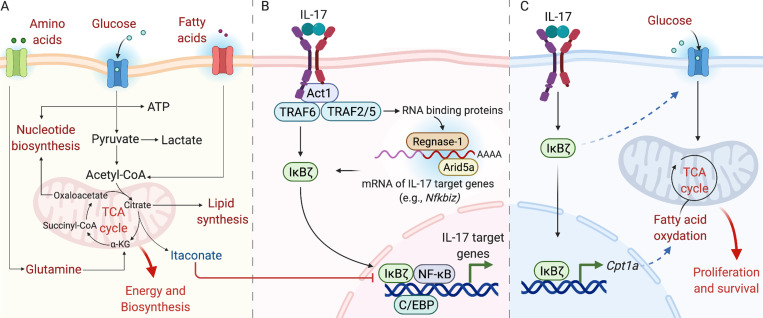Figure 2.
IκBζ mediates IL-17–driven metabolic and immunological responses. (A) Cellular metabolism generates energy and regulates cell function in numerous ways. Glucose metabolism creates intermediates that supply different metabolic pathways. For example, pyruvate is converted to acetyl-CoA, which feeds into the TCA cycle to generate ATP. Oxaloacetate and citrate are used for nucleotide and lipid synthesis, respectively. Fatty acids are metabolized through β-oxidation to acetyl-CoA, whereas glutamine is metabolized via glutaminolysis to α-ketoglutarate. Some metabolites (e.g., itaconate) directly influence IL-17 responses. (B) IL-17 activates downstream signaling pathways through distinct TRAF proteins. TRAF6 induces IκBζ, NF-κB, C/EBPs, and MAPK pathways. Together, these pathways upregulate transcription of IL-17–dependent target genes. Additionally, IL-17 controls posttranscriptional events that increase target mRNA levels through various RBPs (e.g., Act1, HuR, Arid5a, Regnase-1). (C) IL-17 promotes stromal cell survival in lymph nodes (e.g., FRCs) through cell metabolic regulation involving an IκBζ-dependent increase in glycolysis and mitochondrial activity.

